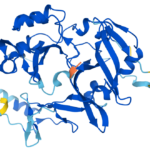Neuroscience—and the new weapons of the mind
By Robert Bruner, Filippa Lentzos | October 27, 2017
 Superintelligence should be taken seriously.
Superintelligence should be taken seriously.
The Netflix series Stranger Things, launching its second season today, centers on Eleven, a girl with psychic powers who has escaped a dark and psychologically abusive government program that seeks to harness and weaponize her powers. While Stranger Things is a work of science fiction, it is not as far removed from reality as it initially seems. The series is rooted in a decades-long (but long defunct) CIA research program called MKULTRA, which involved bizarre, top-secret research on how to deliberately produce behaviors and emotions—such as fear, anxiety, or confusion. While MKULTRA is infamous for its attempts to control the mind through hypnosis and paranormal phenomena, its researchers primarily concentrated on the use of pharmaceuticals and mind-bending drugs such as hallucinogenic mushrooms, marijuana, heroin, LSD, and truth serums to make intelligence targets more cooperative in questioning and more willing to act as agents of the United States. Ultimately, the project failed because of a lack of scientific understanding of the inner workings of the brain and how to manipulate it.
But today, neuroscience appears to be breaking down previous technical barriers to the exogenous control of emotion, behavior, and ultimately the mind.
Scientific breakthroughs in the understanding of the biological basis of behavior and cognition have given rise to numerous treatments for neurological and psychiatric disorders. These treatments have improved the quality of life for many people all over the world. But these technologies have dual-use potential. Psychiatric drugs used to treat anxiety, depression, or mania can force a person to experience those same emotions. These drugs work by returning overactive or underactive neural signaling associated with mental disease to normal levels. The same principles, however, can be used on healthy individuals to manipulate their brain chemistry and change their behavior and emotions. These drugs can be used on individuals as a form of psychological torture—or could be deployed on the battlefield to quickly incapacitate, or change the emotions of, a large group. Additionally, due to growing knowledge of the neural mechanisms active during memory formation, it may become possible to enhance or delete memories—or even, using emerging brain-stimulation techniques, transfer thoughts from one individual to another.
Psychiatric drugs and brain stimulation stand out as neurotechnologies of particular concern. But what are the on-the-ground realities of these technologies—what is the potential for converting clinical uses of behavioral neuroscience to the battlefield? Is it technically possible to alter brain chemistry in order to introduce novel emotions, cause cognitive shifts, and affect behavior?
Yes—but endeavors to biochemically or electrically control the mind for military benefit will likely fail for the same reason that similar attempts under MKULTRA failed: Neuroweapons are extremely difficult to operationalize in practice. Nonetheless, considering the increasingly unstable geopolitical situation and the ambiguous status of neuroweapons under international law, scientists (and the broader international community) must remain vigilant about neurotechnologies as they become more refined—and as the practical barriers to their malevolent use begin to lower.
Drugs and neuro-bugs. Threat assessments regarding neuroweapons can sometimes seem alarmist, but that does not mean they are without merit. Behavior-altering drugs are readily available; in many cases, they have been rigorously tested and approved for human use. Today, these drugs are more effective and more specific in their action than ever before. Numerous classes of widely available psychiatric drugs are known to induce, as common side effects, behaviors or states of mind—such as confusion, anxiety, or depression—that have traditionally been the goal of many torture programs. They do so without leaving any cuts or bruises. For example, wakefulness-promoting drugs such as modafinil (a drug commonly prescribed for narcolepsy) are known to cause anxiety, nervousness, and confusion. The benzodiazepine class of drugs can generate depression, confusion, and memory loss as side effects of its therapeutic uses. Moreover, selective serotonin reuptake inhibitors, while commonly used to increase serotonin transmission for treatment of depression, have also been linked with pro-social behaviors and cooperation, which could be useful in an interrogation. Behavior-controlling drugs, then, may be able to replicate the emotions that torturers seek to produce to force cooperation—or they may artificially induce trust and the surrender of information.
Dietary modification also shows increasing promise for the exogenous manipulation of neurotransmitter signaling. Recent research into the effects on brain chemistry of the microbiome—the bacterial flora located in the human gut traditionally thought to aid in digestion—shows significant potential for covert alterations of neurotransmission. Intestinal bacteria play a significant role in immune system response, which may indirectly affect neurotransmitter concentration and subsequently shape behavior. By changing the diet of a person, or mouse, to alter the relative concentrations of gut microbiota, neuroscientists have been able to produce anxiety and increase and intensify the hormonal stress response in both humans and mice. A guard’s complete control over his or her prisoners would therefore make it easy to covertly alter brain chemistry to increase prisoners’ amenability to questioning.
If mass-produced, weaponized, and spread further afield, the same drugs that show promise as substitutes for psychological torture could be used as neurochemical weapons that alter the emotions of a nation’s armed forces, or that quickly change hearts and minds within a civilian population by influencing the visceral reaction to a military campaign. The most threatening neurochemical weapons—and the most likely to be used—are hypnotic drugs that reduce alertness, sedate, and anaesthetize. Psychedelic drugs, however, which alter cognition, emotion, and behavior, also have potential for battlefield deployment because of their ability to disorient and simulate psychosis. Numerous microbes and toxins that target the nervous system also have potential to affect decisions about whether to fight or surrender and could significantly impede adversarial soldiers. For example, the parasite Toxoplasma gondii can cause impulsivity, agitation, and confusion, and the Gambierdiscus toxicus bacterium can cause nightmares and a burning sensation.
These technologies, while promising, are not fully formed. The “desirable” effects of these drugs are side effects of a main action and never are fully guaranteed. Additionally, drug dosage and an individual’s medical and family history play important roles in the efficacy and final behavioral outcome of neurochemical manipulation. The problems experienced by MKULTRA drug researchers underscore the difficulty of operational deployment. The drugs used by MKULTRA researchers—to inspire trust, elicit truths, change closely held beliefs, or alter memories—had unintended effects that ran contrary to the goals of their use. For example, the truth serums scopolamine and sodium pentothal, as well as LSD, made subjects drowsy and unable to answer questions. Drugged suspects would often spew fiction as well as fact. Often, people interrogated with these drugs would become extremely susceptible to sub-verbal cues from their interrogators, and on realizing they had been drugged, would then harden themselves against the effects of the drug and against future questioning.
Today’s drugs face similar challenges. They often involve unintended effects that people experience differently depending on their individual physiology and medical history. There is no such thing as a wonder drug—and just as the clinical treatment of a psychiatric disease requires a prolonged regimen of trial and error to find a medicine that treats the symptoms of a disorder without producing unacceptable side effects, an interrogator must go through a protracted process to identify a drug that produces usable emotions. These problems are compounded when a drug is to be administered to a large group. An incapacitating neurochemical attack must be disseminated in a manner such that people of varying heights, weights, and medical histories receive the same dose. If a person receives too low a dose, he or she may not experience the desired incapacitating effects of the agent; too high a dose may result in death and limit the nonlethal benefits associated with this weapon class. This dissemination challenge has yet to be overcome.
Of stimulation and spies. Brain stimulation, with its ability to alter the electrical conduction patterns of neurons, is another technology showing increasing potential for military and intelligence applications. There are numerous stimulation approaches—some of which, such as deep brain stimulation, have already been clinically approved for the treatment of Parkinson’s disease and depression. Yet the nontherapeutic uses of brain stimulation are becoming increasingly evident. A growing body of research that leverages new stimulation techniques is demonstrating a nascent ability to alter memories, control the body, and communicate ideas directly between brains.
In 2013, a landmark paper published in Science described how researchers used intracranial optical stimulation of hippocampal neurons to introduce a false memory of fear in a mouse. While the clinical applications are limited, this experiment demonstrated that memories could be manipulated by altering the firing patterns of key neurons. Building on this experiment, another group of researchers showed that memories can also be transferred between animals. When researchers recorded the hippocampal firing patterns of a rat learning (and encoding memories of) how to perform a task, and transmitted those patterns to another rat via intracranial stimulation, they found that recipient animals could successfully perform the same task without any training. While these experiments used stimulation probes requiring surgical implantation, the emerging ability to plant memories is reminiscent of brainwashing attempts by the Soviets and Chinese during the Korean War—and presents the possibility of creating a neuroscience-enabled “Manchurian Candidate.”
It is a rather large leap, however, from manipulating the memories of rats to manipulating those of people. How specific memories are encoded in the brain is still poorly understood—and while the memories of animals have been successfully manipulated, the methods used in these experiments are not amenable to use in humans. The tasks that scientists had rats complete so they could observe the processing and storage of memories are not representative of the complex interplay of cognitive processes that contribute to a human memory, nor of how people use memories to form belief and moral systems. It would be extremely challenging to extract from one individual a specific firing pattern associated with a complex memory and transfer it, via electrical recordings, to defectors or potential spies and compel them to act against their own interests.
Of potentially greater impact are emerging stimulation approaches such as transcranial magnetic stimulation and transcranial direct current stimulation, which noninvasively alter neural transmission. The enhancement of memories through these two techniques is more plausible than through the more invasive brain stimulation approaches described previously. Several groups have used the two techniques to enhance short-term working memory and speed of recall. Nations have shown interest in using such techniques to enhance the cognitive capabilities of their forces (though the offensive applications are minimal).
The two techniques also ostensibly provide new approaches to linking brains together in brain-brain networks, which are showing a nascent ability to control the body and influence the mind. In a seminal brain network experiment, electrical activity correlating to motor movements associated with communication (for example, mouth or tongue movements to form syllables and words) was recorded and transmitted directly into the brain of someone on the other side of the world (in this case, the sender was in India and the recipient in France). The senders successfully transmitted words to the recipient without actually speaking. Using the same technology, a group at the University of Washington demonstrated that a sender can share sensory information with a recipient to facilitate cooperation in video game play, using a paradigm in which only the sender could see the monitor but the recipient had control of the game. The sender could communicate to the recipient when he or she needed to fire a missile at a fictional alien spaceship invading earth.
The military applications of the brain-brain networks are evident. At a relatively benign level, inter-brain communication might revolutionize command and control—but more malevolent uses of this technology are easily conjured. Brain network researchers suggest that such systems could ultimately result in one-way transmission of emotions and feelings between individuals. The unilateral flow of emotion or ideas would enable manipulation at levels never seen. If a person unwittingly became a recipient in a brain-brain network, planting thoughts would theoretically become quite easy.
Regardless of its burgeoning capabilities, brain stimulation is currently limited to the laboratory environment. Brain stimulation experiments involving humans, such as those described above, are by design divorced from the real world and are not generalizable to operational environments. A multitude of factors—stimulation intensity, duration, location—must be controlled to yield marginal changes in neural stimulation. Stimulation of deep brain regions still requires surgical placement of probes, further complicating military use. Moreover, the extent to which these methods affect unintended regions of the brain is currently unknown, and brain stimulation’s long-term effects are likewise unknown. Both these issues could further complicate military use of brain stimulation. As with pharmaceutical manipulation of brain chemistry, it is neither easy nor currently feasible to use brain stimulation to manipulate and control human beings in a predictable fashion.
Is mind control back in vogue? Make no mistake, neuroscience can be misused to alter emotions or memories, covertly implant ideas, or cause cognitive shifts. However, significant technical challenges remain—again, operationalizing neuroweapons is extremely difficult. Yet while it is unlikely that promises of mind control will be realized by neuroweapons any time soon, it would be naïve to assume that approaches to behavioral control will not become more refined over time. Obstacles to behavioral control also present themselves to psychiatrists treating disease and, as better psychiatric treatments continue to be pursued, barriers to the malignant use of neuroscience will lower. Neuroscience can be weaponized and deployed by actors willing to expend the time, money, and resources necessary.
International humanitarian and armament law represent crucially important components in governing the development and use of neuroweapons. On the surface, these legal standards prohibit neuroweapons. Their strength, however, has been weakened by ambiguities and by the defiance of state actors. For instance, because international bodies had failed to provide guidance about which specific actions constituted torture, the Bush administration was able to argue that its “enhanced interrogations” of Guantánamo Bay prisoners did not meet the severity threshold of pain or mental injury required by international law—and thus could not be considered torture under existing treaties. In the context of state attempts at behavioral control, arguments similar to those of the Bush administration could be used to explain away the use of pharmaceuticals or neurotechnology that malevolently altered the inner workings of the brain. The prohibition of neurochemical weapons under armament law is much stronger, but here too, loopholes and ambiguities exist. Chemical weapons intended for riot control are not prohibited under the Chemical Weapons Convention, for instance; this provides space for states to legally develop incapacitating weapons under the guise of developing a domestic riot control agent, and then rapidly convert neurochemical weapons for use in conflict.
Another challenge to the governance framework is the possibility that, as the technologies described here become more developed, perceptions of their utility may shift—just as barriers to the development and use of biological weapons are decreasing. For example, some observers argue that not only are drugs permissible if (by simulating a state of euphoria and positive emotions) they make a person talk, but that they are a morally superior substitute for torture and “enhanced interrogation.” The allure of behavioral-control capability could change nations’ existing sociopolitical calculations about the utility of neuroscience-based weapons and drive further military and intelligence development of neuroweapons. Troublingly, these shifting perceptions—matched with increasing geopolitical turbulence and a shift away from state-centric conflict—could make behavioral control seem ever more tempting.
An increasingly multipolar world is emerging—one in which rising powers view human rights, justice, transparency, and the use of force differently. Therefore, challenges to humanitarian and armament law will only increase. To monitor the conversion of behavioral neuroscience from benign medical treatments into malignant weapons, and to shape how neuroweapons may be perceived and used, the international community must attach the utmost importance to strengthening the normative and legal framework that is embodied in multilateral treaties and national laws and regulations. The medical standards that doctors and scientists are obliged to uphold, as well as codes of practice and research ethics, must also be strengthened in view of the potential misuse of behavioral neuroscience. The containment of neuroweapons relies on the strength of norms—from the top down and from the bottom up—against the use of torture, unconventional weapons, and the militant use of neuroscience. Both scientists and the international community must remain vigilant about preventing behavioral neuroscience from leaking into the security realm.
Together, we make the world safer.
The Bulletin elevates expert voices above the noise. But as an independent nonprofit organization, our operations depend on the support of readers like you. Help us continue to deliver quality journalism that holds leaders accountable. Your support of our work at any level is important. In return, we promise our coverage will be understandable, influential, vigilant, solution-oriented, and fair-minded. Together we can make a difference.
















